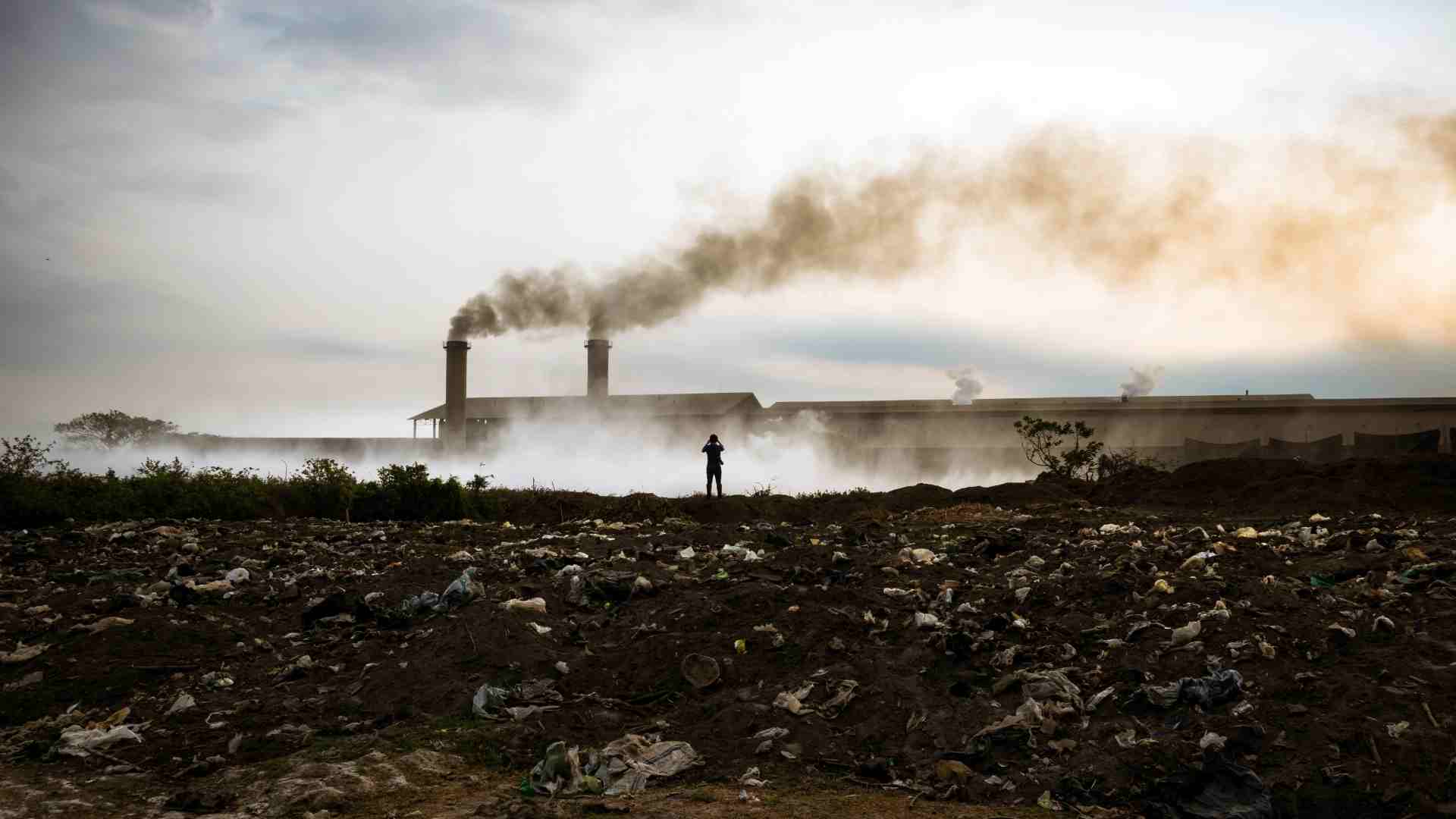Analyzing why the MNRE should scrap the subsidy for waste-to-energy incineration plants.
 “Destructors”, “incinerators” and “waste-to-energy (WTE) incineration” all mean the same thing – indiscriminate burning of garbage! Having a history of about one and a half centuries, WTE incinerators have seen several reboots over the 19th, 20th and 21st centuries. First built in the year 1874 in Nottingham, England, the “Destructors” burned mixed fuel to produce steam, which was then used to generate power. However, they fell out of favor due to vehement protests by neighbourhood communities due to emissions of ashes and fumes. Even today, the problem of pollution and health impacts of burning mixed garbage is something that keeps haunting this toxic technology. Burning garbage to produce electricity is neither a new nor a renewable technology and the Ministry of New and Renewable Energy (MNRE) should stop considering it as such.
“Destructors”, “incinerators” and “waste-to-energy (WTE) incineration” all mean the same thing – indiscriminate burning of garbage! Having a history of about one and a half centuries, WTE incinerators have seen several reboots over the 19th, 20th and 21st centuries. First built in the year 1874 in Nottingham, England, the “Destructors” burned mixed fuel to produce steam, which was then used to generate power. However, they fell out of favor due to vehement protests by neighbourhood communities due to emissions of ashes and fumes. Even today, the problem of pollution and health impacts of burning mixed garbage is something that keeps haunting this toxic technology. Burning garbage to produce electricity is neither a new nor a renewable technology and the Ministry of New and Renewable Energy (MNRE) should stop considering it as such.
WTE vs the other renewable energy –
Commercial solar and wind power which were invented much later after WTE incineration have proliferated the Indian market rapidly and together contribute to about 26% of the generation capacity mix. Solar energy and wind energy have total installed capacities of 70.1 GW and 43.7 GW, respectively, compared to less than 0.1% of India’s installed capacity from waste-to-energy. While the prices of solar and wind power have fallen sharply to about 2.5 rupees/unit for solar and 3 rupees/unit for wind, the electricity generated from WTE incineration, which is priced about 7 rupees/ unit, is the costliest form of electricity generated today (almost thrice the cost of electricity from solar and twice the cost of electricity from coal). Despite receiving such a high cost for the electricity generated, WTE incineration plants are shutting down across the country. This is because, unlike solar and wind which depend on abundant and renewable sunlight and wind for the operation, WTE incineration requires high calorific value municipal solid waste as an input for it to produce electricity. And WTE operators are demanding a tipping fee to make their operations profitable. The tipping fee is the amount received by the operators from the government (read public) for getting waste from the government, delivered at the doorstep of WTE incineration plants!
White vs Red –
WTE incineration has the dubious distinction of being labelled “green” by the Ministry of New and Renewable Energy (MNRE) while it is actually classified by the Central Pollution Control Board CPCB) as a “red category”, extremely polluting industry. According to the CPCB classification, WTE incineration have one of the highest Pollution Index score (>60) because of flue gas discharges such as SOx, NOx, HCL, PM, Dioxins and Furans etc, water effluent with toxic pollutants and hazardous bottom/fly ash that needs to be disposed off in a secured scientific landfill. For comparison, both solar and wind power plants are classified as “white category” industries or “practically non-polluting” industries by CPCB with a Pollution Index score of “0” while the power generated from WTEs bagged a score of “98.4” coming very close to its sibling -the coal based thermal power plants which got “98.5”. Yet, the MNRE has earmarked a grant of 5 crore/MW and upto 50 crore/per WTE project through Central Financial Assistance (CFA). Also, while the price of the electricity generated from the “white category” wind and solar plant hover around 3 rupees/unit, the electricity generated from the “red category” WTE plant is more than double around 7 rupees/unit. “Renewable WTE incineration” is an oxymoron just like how “Renewable coal” is!
Old in the North; New in the South?
Burning of garbage is an activity with very high carbon intensity and has the highest global warming potential per unit of energy generated compared to other fossil fuels such as coal, oil, and natural gas. Also, all government measures on waste prevention, reuse and recycling are undermined because WTE incineration requires a fixed amount of waste to run efficiently. Seeing no light after having put up with this toxic technology for more than a century, the Global North is increasingly moving away from WTE incineration. For example, the EU has made WTE incineration ineligible for any funding in all latest granting measures such as the Just Transition funds, the regional development and the cohesion fund or the EU taxonomy of sustainable finance. Between 2000 and 2022, 48 incinerators have shut down in the USA and no new incinerators have been built in a new site since 1995. India’s tryst with WTE incineration started in 1987 at Timapur, Delhi with technology from Denmark. This investment of 20 crores did not last even for 20 days because of the low calorific value of Indian waste. Since then, the companies in Global North have been pumping this toxic technology and money into our country. International Funding institutions (IFIs) like Japan Bank for International Cooperation (JBIC) have funded WTE incineration projects in Pune, Bangalore and Delhi through its Japanese company Hitachi Zosen. This is not a lone trend in India, and a number of waste-to-energy projects are being built in the Philippines, Indonesia, Thailand (and other South or South East Asian countries) with both technology and funding from the Global North. India’s national capital Delhi, which burns about 7,000 tons of garbage daily in WTEs, already has the worst air quality in the world and Delhites already lose about 12 years of their lives! WTE incinerators cannot have its place beside renewable energy sources such as wind and solar and its appropriate seat lies next to that of the dirty coal. While WTE incinerators are chucked out of the Global North, it is ridiculous that we are welcoming it with a red carpet in India.
The Ministry of New and Renewable Energy (MNRE) states that its aim is to deploy new and renewable energy using indigenous technology to supplement the energy requirements of the country. WTE incineration ticks none of these boxes! According to the government’s own estimates, even if all of the potential Municipal Solid Waste (about 2,22,336 tons/day) of our country is burnt to produce electricity, it will supplement only 0.06% of India’s power requirement by 2050. However, it will cause irreparable damage to our environment, finances, livelihoods and health. Hence, it is irrational to include waste to energy incineration in the renewables list and promote it as a desirable method of waste management.
Centre for Financial Accountability is now on Telegram and WhatsApp. Click here to join our Telegram channel and click here to join our WhatsApp channel and stay tuned to the latest updates and insights on the economy and finance.

